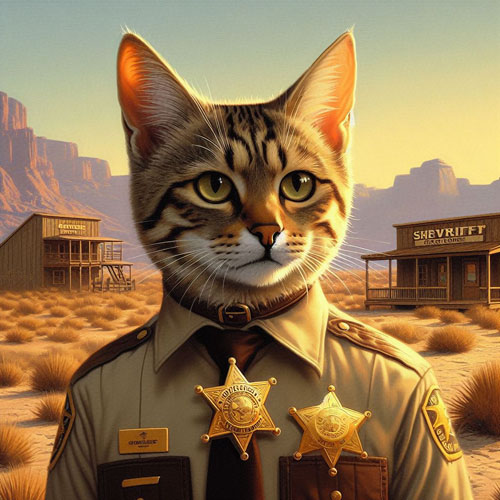Dangers to Savannah Cats
Savannahs are very inquisitive cats and can get themselves into lots of trouble (that’s why we love them so). There are a lot of dangers to your Savannah cat that should be watched for. They love to explore and can wander a long way if outside. Indoors only is best for a cat of any breed. One thing Savannah Cats will do is eat things they should not. Below is a list of some stuff in the home that is a danger to all cats, not just Savannahs
Cat dangers just outside your door
Dogs
Getting Stolen
Poisonous Animals like spiders and snakes
Roaming and getting lost
Accidents
Hanging or Choking from non-break away collars that get caught on something
Abusive people
Predator Wildlife
Other cats (disease and fights)
Parasites
Inclement Weather
Antifreeze that contains ethylene glycol
Cocoa mulch
Chemicals used on lawns and gardens,
De-icing salts used to melt snow and ice
Cans and garbage (there are some nasty things in the garbage)
Cars
Animal Traps
Rat and Mouse poisons and bait
Garden poisons and insecticides
Threats inside the house
Chocolate of any kind (can be fatal if enough is ingested)
Many house plants (especially lilies, ivies, and cactus)
Cigarettes (including butts)
Bread wire twists ties/plastic fasteners
Hair ties/ponytail holders (can cause intestinal blockage if not passed; consult vet ASAP)
Rubber bands
Staples, paper clips, thumb tacks
Thread, yarn, any string, dental floss (if ingested, do not pull out. Consult your vet)
Garlic, onion, salt, grapes, raisins, alcoholic beverages, coffee, tea
Essential oils used as fragrance or air fresheners
Cooked bones (can splinter easily and be swallowed)
Recliners (check to make sure kitty is not under chair or inside of it)
Plastic bags and paper bags with handles
Saran wrap and aluminum foil
Electrical cords
Mini blind cords Toilets
Washers and dryers
Sewing needles and pins, buttons, etc
Toothpicks
Cheaply made cat toys
Hot stoves and burners, wood stoves, refrigerators
Candles left burning unattended
Children’s small toys
Balloons
Cedar and other soft wood shavings
Insect control products, such as the insecticides used in many over-the-counter flea and tick remedies
Human medications, such as pain killers and vitamins
Poisonous household plants
String, yarn, rubber bands and even dental floss
Toys with movable parts
Rawhide dog chews
Holiday decorations and lights
Chocolate
Fumes from nonstick cooking surfaces and self-cleaning ovens
Leftovers, such as chicken bones
Savannah cats are like perpetual two year olds – so try to always remember the above list and keep your new savannah kitten or adult safe.
Tools for keeping your pet safe
If all of your precautions fail, and you believe that your pet has been poisoned, contact your veterinarian or emergency veterinary service immediately. Signs of poisoning include listlessness, abdominal pain, vomiting, diarrhea, muscle tremors, lack of coordination and fever.
ASPCA Poison Control Center
You can also call the ASPCA Animal Poison Control Center. Their hotline is 24 hours a day seven days a week at 888-426-4435 for a fee of $65 per case. If you call the hotline, be prepared to provide the name of the poison your animal was exposed to; the amount and how long ago; the species, breed, age, sex and weight of your pet; and the symptoms your pet is displaying. You’ll also be asked to provide your name, address, phone number and credit card information.
Pet First-Aid Kit
Here are some basic supplies you’ll need to keep on hand to keep your cat, dog, or other pet safe and healthy. Everyone who shares a home with a pet should have a basic pet first-aid kit on hand that is easy and quick to get to. Keep your pet’s first-aid kit in your home and take it with you if you are traveling with your pet.
One way to start your kit is to buy a first-aid kit designed for people and add pet-specific items to it. You can also purchase a pet first-aid kit from a pet-supply store or catalog. But you can easily assemble your own kit by gathering the items on our lists below.
Basic animal first-aid supplies
Absorbent gauze pads
Adhesive tape
Antiseptic wipes
Blanket
Cotton balls or swabs
Gauze rolls
Hydrogen peroxide (to induce vomiting—do this only when directed by a veterinarian or a poison-control expert)
Ice pack
Non-latex disposable gloves
Petroleum jelly (to lubricate the thermometer)
Rectal thermometer (your pet’s temperature should not rise above 103°F or fall below 100°F)
Scissors (with blunt ends)
Sterile non-stick gauze pads for bandages
Sterile saline solution (sold at pharmacies)
Tweezers
A pillowcase to confine your cat for treatment
A pet carrier
Pet-specific things to keep on hand in an emergency
Pet first-aid book: read the book several times in advance if possible
Phone numbers: veterinarian, the nearest emergency-veterinary clinic, poison-control center or hotline
Paperwork for your pet: proof of rabies-vaccination status, copies of other important medical records
Nylon leash
Self-cling bandage: bandage that stretches and sticks to itself but not to fur—available at pet stores and from pet-supply catalogs
Muzzle or strips of cloth to prevent biting: don’t use this if your pet is vomiting, choking, coughing or otherwise having difficulty breathing
Other useful items to have on hand
Diphenhydramine (Benadryl®), if approved by a veterinarian for allergic reactions. A veterinarian must tell you the correct dosage for your pet’s size.
Ear-cleaning solution
Glucose paste or corn syrup (for diabetic cats or those with susceptibility low blood sugar)
Nail clippers
Non-prescription antibiotic ointment
Penlight or flashlight
Plastic eyedropper or syringe
Rubbing alcohol (isopropyl) to clean the thermometer
Styptic powder or pencil. This is used to stop bleeding in small woulds like clipping a nail to short and making it bleed (sold at veterinary hospitals, pet-supply stores, and your local pharmacy)
Temporary identification tag (to put your local contact information on your pet’s collar when you travel)
Towels
Needle-nosed pliers





